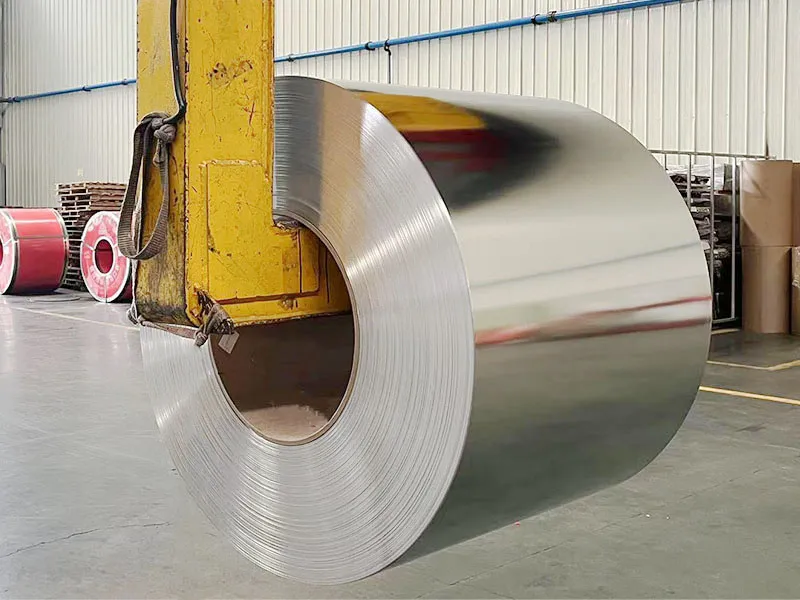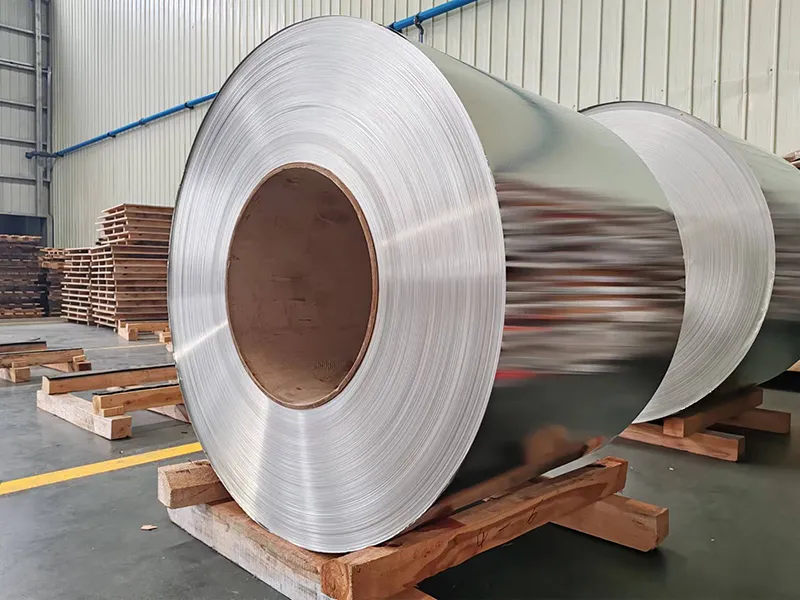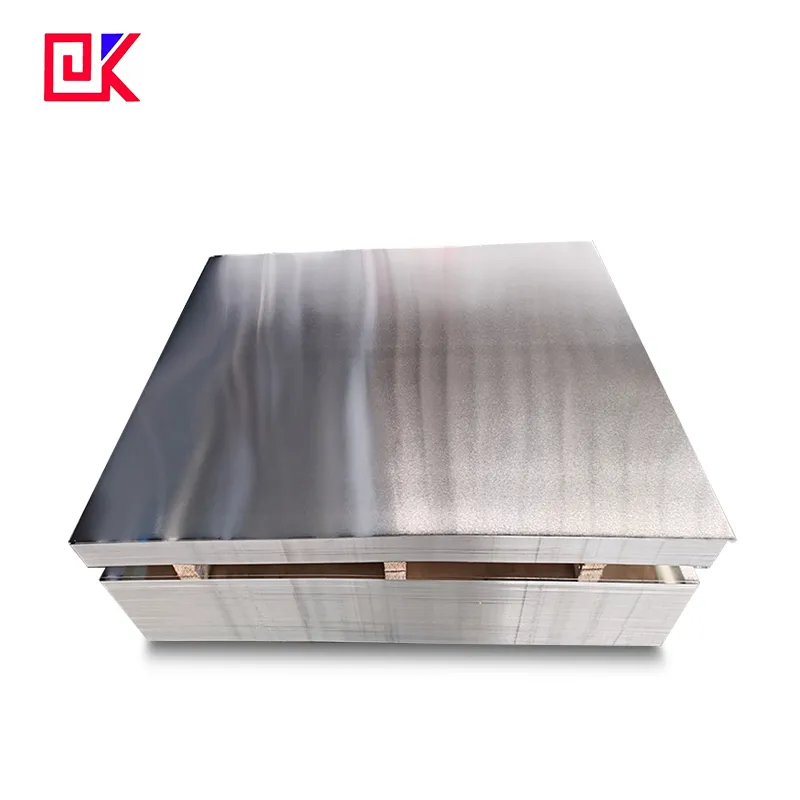In the application field of metal materials, tin-plated steel and galvanized steel are two extremely common materials. They are widely used in industries such as food packaging, construction, automobile manufacturing, and household appliances. Due to their unique properties, they have become indispensable materials in many industries and daily life. Although they look similar, both are based on steel with a metal protective layer, but in fact, there are significant differences between the two in terms of chemical composition, processing technology, performance and application fields.
This article will explore the differences between tin-plated steel and galvanized steel from multiple perspectives to help readers better understand the characteristics and uses of these two materials.

What is tin-plated steel?
Tin-plated steel, also known as tinplate, is a material that is coated with a layer of tin on the surface of steel. As a metal with high chemical stability, tin can effectively prevent the corrosion of steel, especially in an environment with contact with air and moisture.
Tin-plating process
The production process of tin-plated steel is mainly completed through the electroplating process. The steel plate is first cleaned and pickled to remove surface impurities, and then a thin layer of tin is evenly covered on the surface of the steel plate through an electrolytic process. The purpose of tin plating is to prevent the steel plate from rusting by utilizing the chemical inertness of tin, thereby extending the service life of the steel plate.
Performance characteristics of tin-plated steel
Tin-plated steel has good corrosion resistance and ductility. As a relatively soft metal, tin can provide certain corrosion protection for steel while maintaining the original mechanical strength of steel. In addition, the tin coating can also improve the surface finish of the steel plate and provide certain protective properties, making it particularly popular in the field of food packaging.
Because tin-plated steel has a smooth surface and is easy to print and process, it is widely used in food and beverage packaging containers, such as tinplate cans, beverage cans, etc. At the same time, tin-plated steel is also commonly used in some component housings in the electronics industry.

What is galvanized steel?
Galvanized steel prevents corrosion by plating a layer of zinc on the surface of the steel. Zinc is chemically more active and can protect the steel by sacrificing its own oxidation, forming a "sacrificial anode" effect.
Galvanizing process
Galvanized steel is usually made by hot-dip galvanizing or electrogalvanizing. During the hot-dip galvanizing process, the steel is cleaned and immersed in molten zinc liquid, so that its surface is evenly covered with a layer of zinc. This process allows the zinc to form a good adhesion and protective layer with the steel. Electrogalvanizing is to deposit zinc evenly on the surface of the steel by electrolysis. Although the zinc layer is relatively thin, it has a relatively flat surface.
Performance characteristics of galvanized steel
Galvanized steel is known for its excellent corrosion resistance. Zinc, as a relatively active metal, can undergo oxidation reaction before steel, thus acting as a sacrificial anode. During use, even if the zinc layer is damaged, the exposed steel surface can still be protected by zinc, extending the service life of the steel.
Galvanized steel has a wide range of applications, especially in the construction field, such as roof panels, steel structures, and pipes. In addition, galvanized steel is also widely used in fields such as automobile manufacturing and household appliances that require long-term exposure to humid or corrosive environments.

What is the main difference between tin-plated steel and galvanized steel?
Although both tin-plated steel and galvanized steel protect steel through coating and extend its service life, there are significant differences between the two in terms of chemical properties, physical characteristics and application range.
Differences in coating metals
The most fundamental difference between tin-plated steel and galvanized steel lies in the difference in their coating metals. Tin-plated steel is coated with tin, while galvanized steel is coated with zinc.
● Tin: Tin is relatively stable in chemical properties and has good corrosion resistance, but tin itself is relatively soft and cannot provide additional mechanical strength. Tin is mainly used to prevent steel from reacting with air or moisture. Therefore, tin-plated steel is more suitable for areas that do not need to withstand greater physical pressure, such as food packaging.
● Zinc: Zinc is more active than tin in chemical properties and can undergo oxidation reactions before steel, forming a sacrificial anode effect. This allows galvanized steel to be protected even if the coating is partially damaged, so galvanized steel is more suitable for use in harsher environments, such as construction and the automotive industry.
Different anti-corrosion mechanisms
The anti-corrosion mechanisms of tin-plated steel and galvanized steel are also different:
● Anti-corrosion mechanism of tin-plated steel: Tin-plated steel prevents air and moisture from directly contacting the steel through the physical isolation of the tin layer, thereby achieving anti-corrosion effect. If the tin layer is damaged, the steel will be directly exposed to the external environment and prone to oxidation reactions. Therefore, the anti-corrosion effect of tin-plated steel depends on the integrity of the tin layer.
● Anti-corrosion mechanism of galvanized steel: Galvanized steel achieves corrosion protection through the sacrificial anode effect. Even if the galvanized layer is partially damaged, the oxidation of zinc can still protect the steel from corrosion. Therefore, the anti-corrosion effect of galvanized steel is more durable, and its corrosion resistance is still excellent even when used under relatively harsh conditions.
Differences in application areas
Due to the different anti-corrosion mechanisms of tin-plated steel and galvanized steel, they also have different focuses in their application areas:
● Application of tin-plated steel: Due to the chemical stability and food safety of tin, tin-plated steel is mainly used in packaging materials in the food and beverage industry, such as cans, beverage cans, biscuit boxes, etc. In addition, some parts in the electronics industry also use tin-plated steel to prevent components from getting wet or oxidized.
● Application of galvanized steel: Galvanized steel is mainly used in construction and outdoor facilities such as roofs, fences, steel structures and pipes due to its superior corrosion resistance. At the same time, galvanized steel has also been widely used in fields such as automobile manufacturing and home appliance housings that need to be exposed to outdoor or humid environments for a long time.
Differences in processing performance
There are also some differences between tin-plated steel and galvanized steel during processing:
● Processing of tin-plated steel: Tin has a low melting point and is relatively soft, so the processing of tin-plated steel is relatively simple and suitable for use as thin sheet materials for bending, stretching and printing. This makes tin-plated steel one of the preferred materials in the food packaging industry, especially in canned products that require complex printing or processing.
● Processing of galvanized steel: The zinc layer of galvanized steel is relatively hard, and the galvanized steel sheet is usually thicker, so its processing difficulty is slightly higher than that of tin-plated steel. Galvanized steel is more suitable for welding, stamping and heavy processing, and is suitable for larger-scale structural applications such as construction and machinery manufacturing.

What are the criteria for choosing between tin-plated steel and galvanized steel?
The choice of tin-plated steel or galvanized steel depends mainly on the needs of the application field and the performance characteristics of the material. Here are a few common selection criteria:
Corrosive environment
If the application environment is indoors, dry or relatively mild, and there are requirements for food safety, tin-plated steel is a better choice. It can effectively prevent the acid and alkali components in food from chemically reacting with the metal, maintaining food safety and quality.
However, if the application environment is outdoor or humid and highly corrosive, galvanized steel is more suitable. The zinc layer can effectively protect the steel from oxidation, especially in buildings and outdoor facilities, where the corrosion resistance of galvanized steel is better than that of tin-plated steel.
Mechanical strength and processing requirements
If complex processing of the metal is required, such as bending, printing or deep drawing, tin-plated steel is a more ideal material due to its softer tin layer and good processing performance. For situations where it needs to withstand greater mechanical pressure or is used for structural components, galvanized steel can better meet these needs.
Cost factors
Galvanized steel is usually cheaper than tin-plated steel, so it is a cost-effective choice in some large-scale construction or industrial applications. Tin-plated steel still occupies an important position in food packaging and high-precision electronic products due to its advantages in food safety and processing performance, despite its higher cost.

